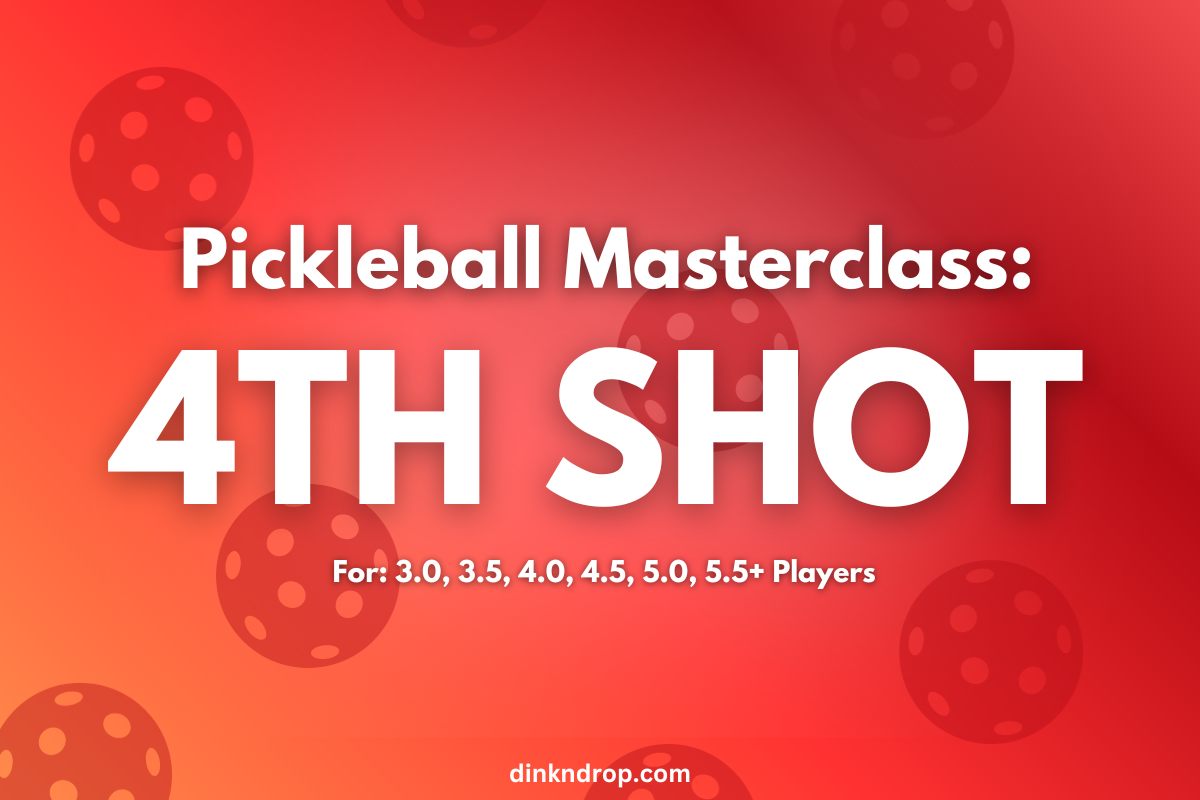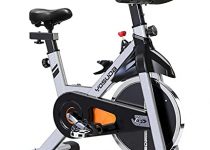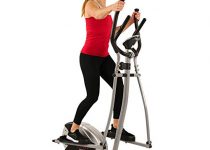Pickleball Guide: Master the Court with Proven Tactics
Pickleball is a fast-growing, paddleball sport that combines elements of tennis, badminton, and table tennis. It’s played with a perforated plastic ball on a doubles badminton-sized court.
Understanding Pickleball’s basics is crucial for both beginners and seasoned players aiming to refine their game. This guide serves as an essential primer, outlining the rules, equipment, and techniques of the sport. Pickleball’s accessibility is a defining characteristic; it’s easy to learn but offers enough depth for competitive play.
The sport has surged in popularity due to its social nature and the low-impact exercise it provides, making it especially popular among retirees and youth alike. Whether you’re picking up a paddle for the first time or looking to hone your skills, this guide will help you navigate the nuances of Pickleball and enhance your enjoyment of the game.
Essential Equipment For Beginners
Welcome to the exciting world of Pickleball! Having surged in popularity, this sport captivates players with its dynamic blend of tennis, badminton, and ping-pong. If you’re new to the game, you’ll need the proper gear to start on the right foot. Here’s a comprehensive look at the essential equipment for beginners to ensure your Pickleball journey is both enjoyable and successful.
Choosing The Right Paddle
Finding the perfect paddle is crucial for any new player. Paddles come in various materials like wood, composite, and graphite. Wood paddles are typically more affordable but heavier, which might impact control and stamina during play. Composite and graphite options are lighter and offer better precision—ideal characteristics for beginners looking to improve their game quickly.
- Weight: Opt for a paddle that’s comfortable to hold and swing. A weight between 6 to 9 ounces is a good starting point.
- Grip Size: Ensure the grip size matches your hand. A simple test is to hold the paddle with your normal grip and see if you can snugly fit your other hand’s index finger between your fingers and the heel of your gripping hand.
- Shape and Size: Standard paddles provide a balanced experience, while elongated shapes offer extra reach and wider bodies give a larger hitting surface.
Types Of Balls For Different Court Surfaces
To play at your best, choosing the right type of ball for the surface you’re playing on is key. Generally, there are two main types of balls: indoor and outdoor.
| Indoor Balls | Outdoor Balls |
|---|---|
| Softer and lighter with larger holes | Heavier with smaller holes to withstand wind |
| Designed for smooth, indoor courts | Durable for rougher, asphalt or concrete surfaces |
Always check the ball’s bounce before play; it should peak at 34 inches when dropped from a height of 78 inches to be regulation.
Importance Of Proper Footwear
Good footwear is non-negotiable in Pickleball. The right shoes will help with grip, balance, and the prevention of injuries. Look for soles designed for lateral support to help with the quick sideways movements in the game. Cushioned insoles and proper fit also contribute to comfort and performance. Court shoes specific to racket sports are the ideal choice as they provide the necessary stability and flexibility for Pickleball’s unique demands.
- Ensure shoes have non-marking soles to avoid leaving scuffs on court surfaces.
- Look for shoes with ample ventilation to keep your feet dry and comfortable during intense play.
- Consider durability; Pickleball can be tough on shoes, so choose a pair with a reputation for lasting under frequent use.
Master The Court Layout
Understanding the intricacies of a pickleball court can be the difference between a novice and a savvy player. Before you serve, volley, or smash your way to victory, it’s crucial to familiarize yourself with the court’s dimensions, zones, and specific markings that govern the game. Let’s dive into the details that will help you navigate the court like a pro.
Dimensions and zones of a pickleball courtDimensions And Zones Of A Pickleball Court
A pickleball court is a rectangle that measures 20 feet in width and 44 feet in length, encompassing the same size as a doubles badminton court. For players looking to convert their tennis or badminton courts, these dimensions are key. Here’s how the court is segmented:
- Service Areas: Divided into two squares on either side, each measuring 10 feet by 15 feet.
- Non-Volley Zones: A 7-foot area in front of the net on both sides, commonly referred to as “the kitchen”.
- Baselining: The outermost lines of the court, extending for 44 feet in length.
It’s essential to commit these measurements to memory as they directly influence gameplay and strategy.
Understanding the non-volley zone (“kitchen”)Understanding The Non-volley Zone (“kitchen”)
The non-volley zone, or “kitchen”, is a critical area in pickleball. It is a no-go zone for volleys, which means you must let the ball bounce once if you’re standing in this space. Here are the key points to understand:
- The kitchen measures 7 feet from the net on both sides.
- Players are prohibited from performing a volley while standing in the kitchen.
- Moving into the kitchen is permitted only after the ball bounces.
Staying aware of the kitchen rules is crucial for both offense and defense, ensuring you avoid faults and capitalize on your opponent’s positioning.
Service boxes and baselinesService Boxes And Baselines
Grasping the concept of service boxes and baselines is essential to properly serve in pickleball. Service must occur diagonally across the court into the opposite service area. Notable details include:
| Service Box | Baseline |
|---|---|
| Each box is 10 feet by 15 feet. | The baseline runs along the 20 feet width of the court. |
| Service must land in the opposite box. | Baseline serves as the boundary for valid service. |
Mastering both placement and strategy when serving can set you up for success and control the pace of the game.
Strategy Essentials For Competitive Play
Ascending through the ranks in competitive pickleball play demands a well-honed strategy. Success is not just about mastering the basic rules or refining your stroke mechanics – it’s about developing a deep understanding of strategic play that can give you an edge over the competition. From the initial serve to the final point, every shot counts. By focusing on serve and return strategies, selecting your shots wisely, and perfecting teamwork in doubles play, you can elevate your game from amateur to formidable competitor.
Serve And Return Strategies
Starting strong in pickleball begins with a strategic serve. Serving deep to the opponent’s backhand can limit their offensive options and set the tone for the rally. Consider mixing up your serves with varying speeds and spins to keep your adversary guessing. Consistently practicing these serving techniques can significantly impact your in-game performance.
- Implement a soft serve to counter aggressive returners.
- Utilize a power serve when playing against a weak backhand.
- Test your opponent with wide-angle serves to stretch their positioning.
Mastering the return of serve is equally important. Aim for precision and position yourself to take advantage of the third shot. By returning serves deep and limiting your opponent’s ability to approach the net quickly, you establish control of the point’s tempo from the outset.
Shot Selection And Positioning
In the heat of the match, selecting the right shot is pivotal. Make every move with purpose, choosing shots that maximize your strengths and exploit the weaknesses of your opponents. Cultivate a diverse shot repertoire:
- Execute drop shots to bring opponents to the net on your terms.
- Unleash a drive to apply pressure and keep adversaries back.
- Employ lobs when opponents are positioned too close to the net.
Positioning cannot be overlooked. Maintain a stance that allows for agility and quick reactions. In singles, cover your court efficiently, using sideline-to-sideline movement. In doubles, coordinate with your partner for an impenetrable defense and a collaborative offense.
Advanced Doubles Teamwork Tactics
Doubles play in pickleball introduces a heightened level of complexity, where teamwork is the linchpin to dominating the court. Develop tactics that leverage two players moving as one unit:
- Practice the stacking strategy to keep your strongest player aligned for the forehand.
- Maintain effective communication to coordinate shot-making and positioning.
- Use poaching and switching to defensively cover more ground and confuse opponents.
Ensuring seamless transitions and positioning can make the difference between winning and losing. Align with your partner to cover the court, employing the “two up, two back” formation to maintain a powerful offensive front.
Embracing these strategy essentials transforms your game into a chess match, where each move is calculated and every advantage is secured through tactical prowess. Put tools and techniques into practice to not just play pickleball, but to outthink and outplay competitors, ensuring your rise to the top of the scoreboard.
Drills To Sharpen Your Skills
Welcome to the ultimate Pickleball Guide’s skill enhancement section. As the sport continues to skyrocket in popularity, elevating your gameplay has never been more crucial. Whether you’re a beginner or an intermediate player, mastering certain drills can immensely sharpen your skills, refine your techniques, and boost your on-court performance. The drills we’ve outlined below cater to a variety of key aspects, from solo and partner exercises to specific target practices, not to mention conditioning workouts designed to increase your speed and agility on the pickleball court.
Solo And Partner Drill Examples
Practicing alone or with a partner is a foundational step toward improvement. For solo drills, focus on wall ball exercises:
- Dink shot practice: Hit the ball against a wall at a consistent height to simulate dinks over the net.
- Serve repetition: Work on varying your serve speed and placement by aiming at different sections of the wall.
Partner drills are equally critical, as they mimic real match scenarios:
- Third shot drops: Take turns with your partner executing the third shot drop, aiming to land the ball into the kitchen consistently.
- Volleys exchange: Stand opposite your partner at the net and rapidly exchange volleys to improve your hand-eye coordination and reflexes.
Target Practice For Accuracy Improvement
Accuracy is a pivotal part of pickleball, and target practice is the ideal way to hone this skill. Set up targets within the court and aim to hit them with different strokes:
| Stroke | Target Location | Objective |
|---|---|---|
| Serve | Backcourt corners | Improve serve depth and placement |
| Dink | Kitchen line | Master the soft game at the net |
Repeating these exercises will increase your ability to place the ball exactly where you want it, under various game-like conditions.
Conditioning Exercises For Speed And Agility
Speed and agility are critical components that can take your pickleball prowess to the next level. Engage in conditioning exercises that boost these attributes:
- Lateral shuffles: Enhance lateral movement and quick direction changes.
- Sprints: Develop explosive speed with short distance sprints across the court.
- Agility ladder drills: Improve footwork and coordination with various patterns on an agility ladder.
Commit to these exercises on a regular basis, and you’ll notice a significant improvement in your ability to cover the court and react to shots more swiftly.
Mental Preparation Before Matches
Stepping onto the pickleball court with confidence doesn’t just stem from physical practice, but also from mental readiness. Any seasoned player knows that mental preparation before matches is key to performance. From maintaining composure under pressure to visualizing success, a player’s mind must be as agile as their body. Let’s delve into the mental strategies that can prepare you for victory.
Importance Of Mental Toughness
In the world of pickleball, mental toughness is the bedrock of a winning mindset. It’s the difference between crumbling under the pressure and rising to the challenge. Cultivating a strong mental game ensures resilience and the ability to bounce back from setbacks. Essential components of mental toughness include:
- Focus – Staying grounded in the present moment.
- Determination – Pushing through difficult phases of the match.
- Confidence – Believing in your abilities even when the odds are stacked against you.
- Control – Managing emotions and reactions to maintain an edge over your opponent.
Visualization And Focus Techniques
Envisioning success before stepping onto the court can play a pivotal role in the outcome of a match. Visualization and focus techniques involve:
- Creating a detailed mental image of successful strokes and plays.
- Rehearsing match scenarios to prepare for different opponents and strategies.
- Using deep breathing exercises to enhance concentration and reduce anxiety.
- Setting clear, achievable goals for each match to maintain a sharp focus.
Implementing these techniques can bridge the gap between skill and execution, letting you play at your highest level.
Handling Pressure During Critical Points
Whether it’s a tiebreaker or a championship point, the ability to handle pressure during critical points can define a match. To excel in these high-stress moments:
| Technique | Benefit |
|---|---|
| Stay Present | Keeps you focused on the current point, not the scoreboard. |
| Positive Self-talk | Boosts confidence and wards off negative thoughts. |
| Routine Development | Establishes a sense of normalcy and reduces anxiety. |
| Embrace the Challenge | Converts pressure into motivation rather than a hurdle. |
Mastering these tactics can turn pressure into an opportunity to demonstrate mental fortitude and competitive spirit.
Analyzing And Adapting In Real-time
Mastery of Pickleball extends beyond consistent serves and powerful volleys. It encompasses the subtle art of reading the game and making adjustments on the fly. To dominate the court, a player must possess the agility of mind as much as body, constantly tooling and retooling strategies to outthink opponents. This section will delve into the critical aspects of analyzing and adapting your game in real-time, ensuring you remain one step ahead.
Reading Opponents’ Strategies
Understanding your opponent’s game plan gives you a significant advantage. Look for patterns in their play, such as favored shots or repetitive positioning. Insight into their strategy allows you to anticipate moves and counter effectively. Consider these strategies:
- Observe the opponent’s footwork and paddle grip.
- Identify weaknesses in the opponent’s play.
- Exploit any predictable sequences they use.
Adjusting Your Tactics Mid-game
Flexibility is key. When your original game plan does not yield the desired results, it’s time to switch gears. Adaptability can throw your opponent off-balance and turn the tide in your favor. Bring these adjustments into your game:
- Vary your shots to keep the opponent guessing.
- Alter your serving style or speed to disrupt their rhythm.
- Change your position on the court to create new angles.
Making Smart Decisions Under Pressure
The ability to remain calm and make informed decisions under pressure can be the difference between winning and losing. Implement these tips:
| Decision Type | Tip |
|---|---|
| Offensive | Opt for high-percentage shots over risky plays. |
| Defensive | Stay centered, enabling quick movements to either side. |
| Strategic | Take a brief moment to assess the situation before acting. |
Utilizing these tactics will enhance your real-time game analysis. Keep refining your approach every time you step onto the court, and watch as your skills ascend to new heights.
Community And Growth Opportunities
Exploring the world of pickleball extends beyond enjoying the game on the court; it’s also about becoming part of a vibrant community and seizing opportunities for growth. Players of all skill levels can find local clubs, participate in competitive play, and learn from experienced enthusiasts. This comprehensive guide will take you through the essentials of deepening your engagement with pickleball, whether you’re a casual player or an aspiring pro.
Finding and joining local pickleball clubsFinding And Joining Local Pickleball Clubs
Embarking on a pickleball journey begins with connecting with local players. Local clubs are the hubs of pickleball activity, offering a mix of social interaction, skill development, and match play. Here’s how to discover a club in your area:
- Search online for pickleball clubs near you using search engines or social media platforms.
- Visit the USA Pickleball Association website for a comprehensive directory of registered places to play.
- Check out community center bulletin boards or local sports stores for club notices and flyers.
Once you locate a club, reach out and inquire about open play sessions, membership options, and introductory clinics or lessons. Remember to inquire about the skill level the club caters to, ensuring a good fit for your development as a player.
Participating in tournaments and leaguesParticipating In Tournaments And Leagues
Pickleball competitions are not only for elite athletes; they are accessible to players of all abilities seeking to test their skills and experience the excitement of match play. Whether it’s a local league or a national tournament, competitive play offers valuable experiences:
- Improving your game through higher levels of play.
- Meeting fellow pickleball enthusiasts and forging new friendships.
- Gaining exposure to different playing styles and strategies.
To start competing, keep an eye on your club’s announcements or visit the USA Pickleball website for a calendar of events. Signing up for a tournament or league can be a pivotal step in your pickleball growth journey.
Networking and learning from advanced playersNetworking And Learning From Advanced Players
Building relationships with seasoned players can accelerate your learning curve and understanding of pickleball nuances. Here’s what you can do to network effectively:
- Attend club meetups, socials, and open play events to mix with a range of players.
- Request to pair with advanced players for doubles in order to observe their tactics first-hand.
- Consider private or group coaching sessions with highly skilled players or certified instructors.
- Participate in clinic workshops or demonstrations to watch and learn from the best.
Mentorship and peer learning are critical aspects of advancing in pickleball. Tap into the community’s knowledge and don’t be afraid to ask for tips or advice. Experienced players often enjoy sharing their passion and expertise with newcomers.

Credit: dinkndrop.com
Conclusion
Stepping onto the pickleball court can transform your fitness routine with an exciting twist. As we’ve explored, this sport offers health benefits, social connections, and plenty of fun. Embrace the challenge, grab your paddle, and join the pickleball community to see what the buzz is all about.
Ready to play?
Table of Contents


